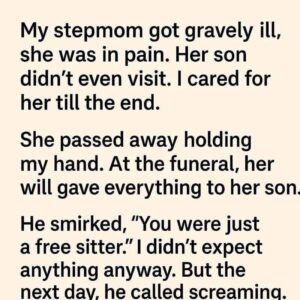A Story of Survival, Justice, and the Unbreakable Bond Between a Girl and Her Canine Savior
The morning of October 15th started like any other day in the Jefferson County Courthouse, but it would end as one of the most extraordinary moments in the building’s hundred-year history. What began as routine testimony in an unrelated case would become the key that unlocked a mystery that had haunted investigators for over three years—the disappearance of the Morrison family and the house fire that was supposed to have claimed their lives.
The Courtroom Before the Storm
Courtroom 3B was a study in controlled chaos that Tuesday morning. Judge Patricia Henley presided over what should have been a straightforward hearing regarding animal control violations—routine cases involving unleashed dogs, noise complaints, and licensing disputes. The docket was packed with minor infractions that would typically be resolved with fines and warnings.
Defense attorney Michael Torres was representing several clients that day, including Officer Jake Manning, whose K9 partner Buster was facing potential retirement due to what the department classified as “excessive emotional responses” during searches. The German Shepherd had been exhibiting unusual behavior for months—whimpering during certain types of cases, refusing to work in specific locations, and showing signs of distress that his handlers couldn’t explain.
“Your Honor,” Torres was arguing, “Officer Manning and Buster have served this community with distinction for six years. The department’s recommendation for early retirement is premature and fails to consider the psychological impact of the traumatic cases this team has worked.”
Prosecutor Sarah Chen shuffled through her papers, preparing to counter-argue that a K9 officer showing signs of emotional instability could compromise future investigations. The case seemed routine—a bureaucratic dispute about whether a working dog was still fit for duty
That’s when everything changed.
The Unexpected Witness
At exactly 9:03 a.m., the courtroom doors opened with a soft creak that somehow seemed to echo through the space despite the low murmur of conversation. Child Protective Services worker Linda Rodriguez entered, guiding a small figure by the hand—a little girl who couldn’t have been more than five years old.
The child was dressed in a simple gray dress that seemed to swallow her tiny frame, her dark hair pulled back in a practical ponytail. But it wasn’t her appearance that brought the courtroom to complete silence—it was something indefinable about her presence, an gravity that seemed impossible for someone so young.
Abigail—though no one in the courtroom knew her name yet—moved with the careful, measured steps of someone who had learned to make herself as small and unnoticeable as possible. Her eyes held a vacancy that spoke of experiences no child should endure, and yet there was something alert and watchful in her gaze, as if she was constantly assessing her environment for potential threats.
Linda Rodriguez approached the bench, whispering urgently to Judge Henley. “Your Honor, I apologize for the interruption, but we have an unusual situation. This child was found yesterday in a foster care facility under suspicious circumstances. She hasn’t spoken since her arrival, but she became extremely agitated when she heard about a police dog being present in the courthouse today. She insisted on coming here.”
Judge Henley frowned, looking down at the small figure standing silently beside the social worker. “This is highly irregular. What does this have to do with the proceedings?”





